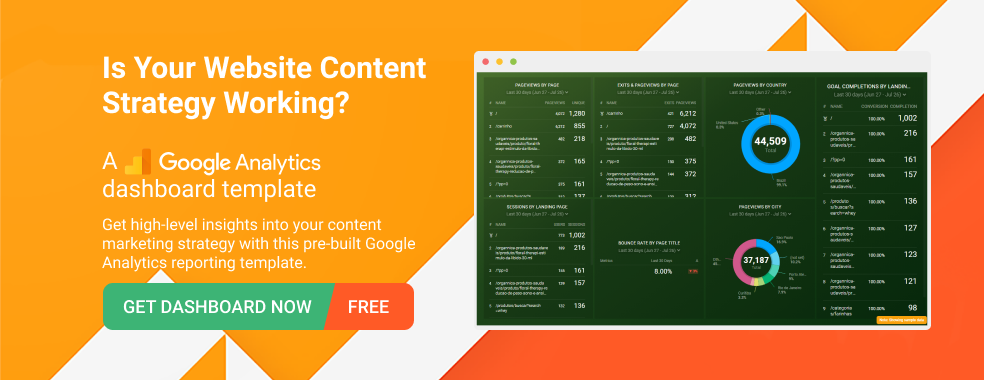Table of contents
Many businesses create content that gets little attention or engagement.
Why?
Is it because the content isn’t written well? Possibly, but using fancy words and florid prose is unlikely to be the key difference.
Is it because people don’t want to read about certain “boring” topics? There might be some truth to that. If you have a business selling screwdrivers and I have one selling tickets for the hottest band of the moment, my articles may get more attention. That said, everyone needs a screwdriver around the house.
So, why then?
Well, there are many reasons business blogs fail to gain traction, of course.
But, there is one I see more often than not. I have found that most failed business blogs fail to write about what their audience cares about. You need to think about your audience every time that you write.
To make sure you do, follow my five-step process…

Decide why you are writing your blog.
If you aren’t sure why you are writing, you can’t expect your audience to care.
What is your objective for writing? There are so many reasons you might write a blog for your business. They could include, but not be limited to:
- you want to build up trust over time so that people become your customers
- you want your website to rank high on online search
- you want to build up your expertise and reputation in a particular area
- you want to write content that your loyal customers will share
- you want repeat business and your blog is a way to remind your customers you exist
- you want to prove that the solutions that your business offers are the best ones
- you want to encourage people directly to buy your products, by providing links to them from your articles
Whatever the reason, you need to be clear before you start writing. Of course, you might be writing different types of pieces for different reasons or your goals might change over time, but have a clear reason why you are writing. Databox recommends setting Smart Goals: Specific, Measurable, Assignable, Realistic, Time-bound. If you really want to be committed to blogging, setting SMART goals is a SMART idea. If you are just starting out, it could be as simple as “write 5 blog posts this week to determine which topics resonate with my email list the most” or if you are further along, it could be, “Write 5 blog posts this month about topic x with the goal of getting 10 more prospects interested in my service related to topic x.”

Decide who you want reading your blog.
You need to think about who you are writing for. If you try to write for everyone, you are likely to impress no one. Instead, think about the demographic that you are seeking to target.
If you want to take this a step further, you should define who your avatar or ideal customer is. (Some people call this a marketing persona.)
What does your avatar struggle with? What are their interests? Are they typically a certain age or gender? Where do they live? What do they read? What do they do in their spare time? The more specific you can define it, the better.
If you can define this, you can then write articles that are specifically targeted to your ideal customer. Otherwise, you risk watering down your content so that it appeals to different audiences. Plus, if you know your avatar inside and out, you can start to think more creatively about how to get your content in front of them, as I’ll explain more below.

Determine what your audience already knows and what they want to learn.
The content you create for your audience should depend upon what you think they already know. Does your target audience already have a lot of specialist knowledge in the area you want to write about, for example? That will change the type of topics and the ‘insider’ language that you use.
If you pitch ideas incorrectly, you could end up being patronizing on the one hand or having concepts sail over the readers’ heads on the other.
Your content should also depend on what it is that you think your audience wants to read or learn. Do they mainly want discussion pieces, how-to articles, or factual reports?
Gather as much feedback as possible for your articles and constantly tailor them to your audience over time.
Also, consider what your audience already knows about your business. As an insider, are you using too much jargon or explaining things in a way that would make sense to someone working at your company, but not to the average reader?

PRO TIP: Measure Your Content Marketing Performance Like a Pro
Struggling to track the impact of your content across platforms? We feel you. Thanks to Databox, fragmented data doesn’t have to hold you back anymore.
Our library of free content marketing dashboard templates puts all the insights and metrics you need in one place. No more jumping between reports!
Measure engagement: Track key metrics like likes, comments, shares across social media platforms to see what content resonates most with your audience. Analyze website traffic, bounce rate, and average time on page to understand how visitors interact with your content.
Optimize conversions: Identify high-performing landing pages and blog posts that drive the most leads using dashboards like HubSpot Marketing Lead Source. Analyze campaign performance and user activity for both organic and paid content with a Facebook Pages & Facebook Ads dashboard.
Improve SEO: See which pages rank highest in search results and drive the most organic traffic. Improve search visibility by visualizing key SEO factors like backlinks and domain rank.
You can easily set it up in just a few clicks – no coding required.
To set up a dashboard, follow these 3 simple steps:
Step 1: Choose a fitting template
Step 2: Connect your data
Step 3: Watch your dashboard populate in seconds
Help readers get to their desired destination.
Focus your writing in a way that helps your readers achieve what is important to them.
If you move their skills forward, they are more likely to think about you in a positive fashion, to read more of your articles in the future, to recommend you to others and to share your content online.
If you help them develop a greater appreciation of what you do, you have a better chance of engaging them as a customer either now or at some point in the future.
As a general point, one of the best ways to become a better writer is to read. While you should not simply replicate other’s methods, you can learn from and be inspired by them. Here are a few post and people who have inspired me:
- ‘How to Build the Ultimate Foundation for Your Career’ by Dorie Clark. Here Dorie provides relevant content for her audience by giving examples from her own amazing career and sharing the resources she has created in a way which feels relevant and not pushy.
- ‘2 Simple Strategies to Grow Your Business Circle’ by Chris Ducker (note that this is an excerpt from Chris’s book, which is a clever way to ‘repurpose’ content that I’ll mention in a minute). Chris, a successful entrepreneur, shares the tips that he uses to build his connections. Without being unnecessarily controversial, he doesn’t hold back on his views, which means that you feel that you are getting his authentic- and therefore more valuable and trustworthy- voice.
- 52 Tips to Improve Your Company Blog — Databox is always compiling excellent advice from many experts. This one is no exception.

Make sure your getting your content in front of them.
So, writing great content, tailored to your audience is a key part of the battle. But, it isn’t everything.
Put time into sharing it with your audience.
LinkedIn is a great place to share content with a professional audience. As well as using LinkedIn to promote articles written elsewhere, LinkedIn is a great platform to post on directly. This article from me explains more. Dave Gerhardt of Drift is a LinkedIn video master and he has shared how he gets 100,000+ views on every video he posts. If you do it right, you’ll see that the engagement stats are pretty impressive for a free platform.
Twitter and Facebook both offer great opportunities to share your work (just remember not to be on broadcast mode all the time, you need to also share the work of others and collaborate with them where you can). If you have defined your audience carefully, you will have hopefully built up a following on social media that is already interested in the work that you do and the content that you create.
That’s another useful point to remember- in an ideal situation, you are putting quality content in front of people who are already interested in what you do. If they are interested, they are more likely to engage with it and to share it with their networks, which is how you can create a constant stream of new people learning about your work.
You can do a lot for free on social media platforms, but it is always worth looking into paid advertising if you have the budget for it. This is another reason why it is helpful to define your avatar as carefully as possible early in the process- it means that you are unlikely to waste your money by targeting the wrong people.
Over time, you should also build up an email list so that you can put your new content directly in the inboxes of your audience.
Stick with it…
Most company’s give up on blogging before they get real traction.
Even if you follow the advice above, blogging won’t work for you over night.
These five steps are key:
- Decide why you are writing.
- Define your audience.
- Figure out what their goals are.
- Produce content to help them get there.
- Find the best way to put it in front of them.
If I had to add a sixth step, it is to experiment. You won’t get it right immediately. You will need to try different topics, adjust your target audience, get feedback on your articles and test different ways to promote your content.
As identifying your buyer persona is a crucial step in the process of creating and promoting content that resonates with your audience, make sure you have done it right.
So, most importantly, as you write posts, measure your blog results. And learn from your failures as much as from your successes. If you write an article and it gets a lot of traction, ask yourself what characteristics may have lead to that success. Try to repeat the formula. If an article or topic gets very little traction, consider writing less about that.
Need help implementing this for your business? Start by downloading my book, How to Become an Influencer or contact me directly.
















